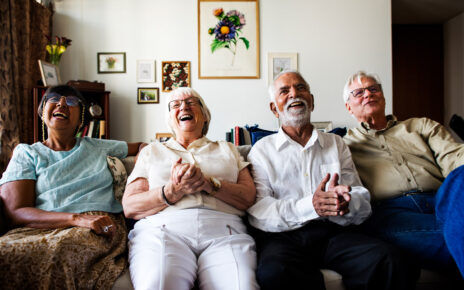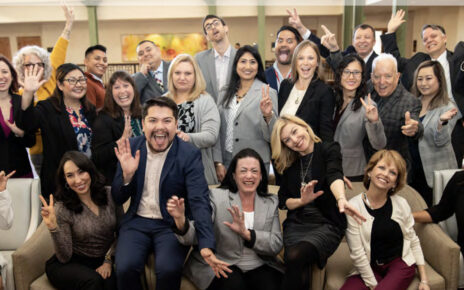By Tracy Carson, Licensed Professional Clinical Counselor, Tracy Carson Therapy
This past Thanksgiving my entire family gathered in Florida to celebrate together after a long pandemic-induced separation. As my father sat with my four boys, his only grandchildren, he remarked that they were having the inaugural meeting of the “Florida Boys Club!” It was such a delightful time together. Little did we know that the inaugural would become the solitary, as four days after the holiday, with little to no warning, my father passed away.
 This article was drafted prior to my trip home for Thanksgiving. With grace and compassion, but certainly from a distance, I laid out what the grief journey might look like. As I read it over it became strikingly clear that the professional point of view would need to become the personal as I navigated grief as a participant, not a bystander. As a Licensed Professional Counselor who has walked alongside of my clients in various stages of their grief journey, I was now challenged to do the very thing that I have spent my career counseling my clients to do. It was time to start taking my own advice.
This article was drafted prior to my trip home for Thanksgiving. With grace and compassion, but certainly from a distance, I laid out what the grief journey might look like. As I read it over it became strikingly clear that the professional point of view would need to become the personal as I navigated grief as a participant, not a bystander. As a Licensed Professional Counselor who has walked alongside of my clients in various stages of their grief journey, I was now challenged to do the very thing that I have spent my career counseling my clients to do. It was time to start taking my own advice.
Grief isn’t linear.
Grief can show up in many different forms, and in many different circumstances. You can deeply grieve the loss of community when you move just as you can grieve deeply the loss of life. Grief doesn’t exist on a spectrum because the experience of loss is as minimal or intense as it is for the person experiencing it. Each person’s experience of grief is different. The invitation is to be fully present for your own journey.
You have permission to prepare for grief.
While my father’s death was sudden, it wasn’t that surprising. From the global understanding that we all die to the unique circumstances of an individual’s health, in some sense we can all be preparing for loss. We can start by engaging in conversations about death and dying and grief. The more we normalize these conversations, the greater our capacity will be for having them. This may look like acknowledging the sorrow and loss that comes with moving a parent out of your childhood home, or the loss of communication with an elderly adult who no longer remembers you. Remember, we experience grief and loss more than we realize. The invitation is to recognize the many forms of grief, acknowledge it and give ourselves permission to learn how to grieve.
Grief can look both typical and atypical.
What is the first thing that comes to mind when you think of grief? For me it’s the image of someone crying. While tears may be a typical response, they aren’t necessarily right and the absence of them isn’t wrong. In the days after my father passed and my sister and I were tasked with walking my mother through the business of death, I found myself in task mode while my sister openly wept. I felt like I was doing something wrong – why wasn’t I crying like she was? When I gave myself permission to grieve the way I needed to (by getting things done) it was a helpful reminder that grief looks different for all of us. The invitation here is that as your grief shows up, simply welcome it; acknowledge its presence and be kind to yourself as you discover what you need most in that moment.
Grief can be complicated.
Sometimes grief brings emotions that are complicated. Perhaps we feel relief? Maybe we feel regret. Perhaps the journey of illness or anticipated loss brought out the side of a loved one that we did not want to experience. This is all normal and okay. Deep breaths. There are so many individual circumstances here that it’s crucial to note that grief, like any long-suffering relationship, may be complicated in its nature. When these emotions surface, be compassionate to yourself. Talk to trusted resources who will hold space for these emotions and provide respite amid confusion. The invitation here is to remember there is no right or wrong way to experience grief – just to experience it.
Grief is an ongoing experience; it’s not meant to be “cured” or “taken care of.”
As I sit with clients who are navigating grief, the most common experience that we tend to work through is not the grief itself, but instead the (unknowingly) hurtful things that people say to make the situation more comfortable. Platitudes and euphemisms really aren’t helpful. They may make the person who is saying them feel better because we want so badly to make our friend or loved one “better;” but for the person who is grieving, it’s shallow. The best rule of thumb is to acknowledge the loss and let the person know that you are thinking of them as they navigate grief. This communicates that you understand that grief is a journey that will look different every day. The invitation here is to remind yourself that there is nothing that can be said or done to make the grief journey go any faster or look differently than exactly how it looks for the person navigating it.
Grief is hard. Grief can be uncomfortable. Grief and the grieving process can also be beautiful. It’s my hope that any season of life that feels hard to navigate would be met with compassion and tenderness. If you feel like you need help navigating these things, please find trusted help in your community, you do not have to journey alone. For those of you who find yourself in a season of grief, you are seen.
Learn more about Tracy at tracycarsontherapy.com




